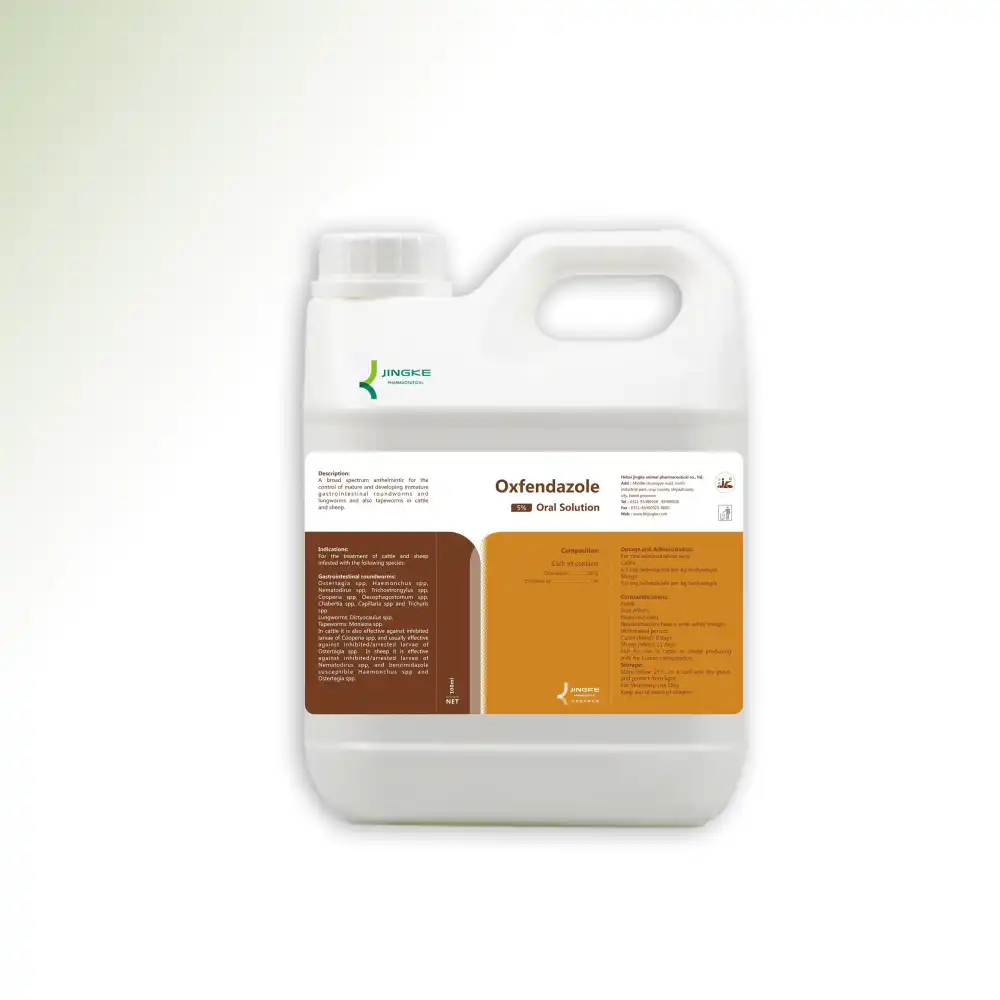Oxfendazole (OFZ), also known as sulfabendazole or sulbendazole, is a novel, highly effective, broad-spectrum, and low-toxic benzimidazole carbamate anthelmintic drug. It is the sulfoxide of fenbendazole, with the chemical name methyl 5-phenyl-2-benzimidazolecarbamate. It was first successfully developed by Syntex Corporation in the early 1970s and is included in the British Veterinary Codex (1985 edition).
Currently, this drug is widely used for deworming livestock and poultry abroad. In China, it was approved as a Class II new veterinary drug by the Ministry of Agriculture in 1993 and belongs to newly synthesized drugs. It was researched and synthesized through the joint cooperation of the Chinese Veterinary Pharmacopoeia Commission and Shaanxi Hanjiang Pharmaceutical Factory.
Clinical Efficacy of Oxfendazole
Oxfendazole is commonly used in many countries such as Japan and Europe and the United States. In particular, when formulated as a pulse-release bolus, it shows significant efficacy in controlling pasture contamination and preventing bovine parasitic gastroenteritis and bronchitis during the grazing season of calves. It achieves a 100% deworming rate against gastrointestinal nematodes and tapeworms in sheep, and its anthelmintic activity is twice as high as that of fenbendazole.

Oxfendazole has a good therapeutic effect on 9 types of parasitic worms in lambs, including Haemonchus contortus. A single dose of 5 mg/kg achieves a cure rate of over 99.4% against the eggs, larvae, and adult stages of 7 of these worms and also has a certain efficacy against the other two. Furthermore, it exhibits strong killing activity against worms such as Haemonchus contortus that have developed resistance to benzimidazole drugs.
Williams (1997) studied the therapeutic effects of albendazole, oxfendazole, fenbendazole, and ivermectin on Ostertagia ostertagi, other gastrointestinal nematodes, and lungworms in cattle. The anthelmintic activity of benzimidazole carbamates against Ostertagia ostertagi was significantly lower than that of ivermectin, but their efficacy against other worms was basically the same as that of ivermectin.
Drug treatment for porcine cysticercosis has historically been unsuccessful due to the low efficacy, high cost, side effects, and need for multiple doses of existing drugs. Gonzalez (1996) compared the therapeutic effects of praziquantel and oxfendazole and found that praziquantel could not kill all porcine cysticerci, while oxfendazole was able to kill all of them without any detectable side effects, leaving only small scars in the muscle. This was the first time oxfendazole was proven to be an inexpensive, effective, practical, and single-dose drug against porcine cysticercosis.

Liu Yongjie (2000) observed the in vitro effects of benzimidazole drugs on porcine cysticerci and found that oxfendazole, albendazole, flubendazole, and fenbendazole all had inhibitory effects on porcine cysticerci. If found to be safe for humans, oxfendazole could be developed as an effective and inexpensive drug for treating tapeworm infections.
In conclusion, oxfendazole, as a novel benzimidazole carbamate anthelmintic drug, has promising application prospects in the treatment of various parasitic worms.

